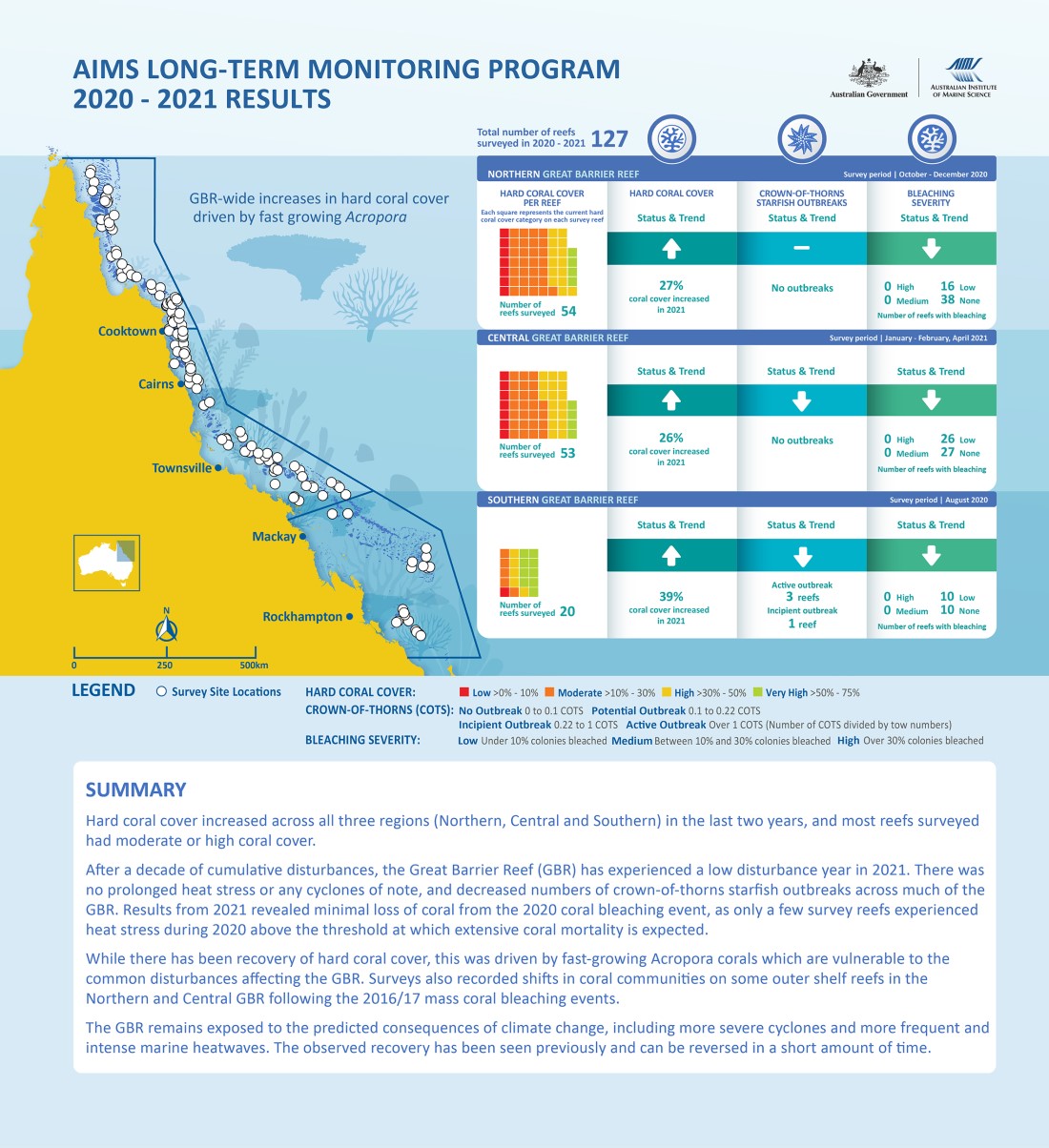But, like coral reefs almost everywhere, large swaths of the world-famous Great Barrier Reef are, in fact, in decline. The Australian government’s latest five-year
report card on the status of the Great Barrier Reef acknowledged in 2019 that the outlook is very poor and deteriorating. The reef is endangered and struggling to cope with the cumulative impacts of water pollution from agriculture, coastal development, dredging, shipping and especially climate change. Ambitious plans to further develop and export coal and fossil gas across the reef from the adjoining catchment of the World Heritage Area, if they come to fruition, will only cause further damage.
Bowing to earlier pressure from UNESCO, in 2015 Australia developed a new blueprint to stave off an in-danger listing by improving the condition of the Great Barrier Reef —
the Reef 2050 Plan. However, the plan has been widely criticized for ignoring Australia’s contribution to climate change. While it includes ambitious targets for reducing runoff of pollution from land, the plan is underfunded and, after 5 years of operation, is failing to reach most of its
targets.
Australia clearly views an in-danger listing by UNESCO as an undesirable sanction, which it argues would damage reef tourism. But the purpose of the in-danger list is to highlight World Heritage properties that are in trouble, identify the causes of their decline and address them. Currently, 53 World Heritage properties are on the list. The Galapagos Island and Belize Barrier Reef Reserve System have both gone on, and off, the in-danger list, with
no apparent impact on international tourism.
Australia’s recent record on tackling climate change is poor. It is the only country in the world to have legislated and then
repealed a carbon pricing mechanism, and Australia has no meaningful policies in place to electrify transport. Australia also has one of the
highest levels of per-capita emissions of greenhouse gases in the world, with domestic emissions higher than the UK, France or Italy. On top of its domestic pollution, Australia is the third-largest exporter of fossil fuels in the world, after Saudi Arabia and Russia. In the lead-up to the COP26 meeting in Glasgow, Australia has
not committed yet to net-zero emissions by 2050 and has not increased its comparatively weak Nationally Determined Contribution under the Paris Agreement since 2015.
So far, Australia has not acknowledged the obvious link between its responsibilities for managing the Great Barrier Reef for future generations, and the damage caused by its ongoing promotion of fossil fuels. Australia can, and must, do better.


